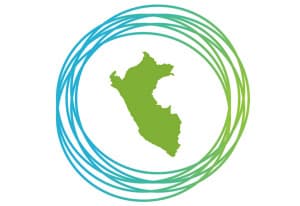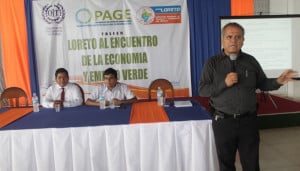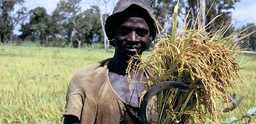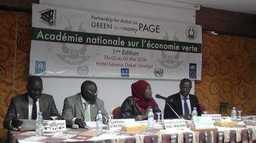Loreto region occupies more than a quarter of the territory of Peru. There is high commitment to and potential for green growth in the region due in part to its location in the Amazon Rainforest and significant jungle coverage. The Regional Government, at the initiative of the Regional Directorate of Labour, organized the “Loreto Meeting on Green Economy and Green Jobs”. The meeting aimed to synergize efforts on green jobs, identify needs and priorities, and determine actions to encourage dissemination of knowledge on green growth.

The event was attended by representatives of the Research Center of Universidad del Pacífico (CIUP), PAGE Peru, public officials, the private sector, entrepreneurs, members of civil society, among other stakeholders. The Governor of Loreto presented the region’s approach to green growth and emphasized that the concept of green growth for Loreto is a tool to assess and optimize biodiversity, water resources, carbon sinks, etc. as sources of renewable and inclusive wealth. The Governor also presented the progress on institutional planning towards a green economy. For example, public investment projects to enable better functioning of the Regional Environmental Authority can support regional greening efforts.

At the event, the PAGE national coordinator in Peru, Miguel Angel Beretta, presented PAGE support towards a green economy in Peru including tools for the national government on intersectoral policy analysis, the promotion of green industry and green jobs, and the development of a stocktaking study on the state of green economy at the national level. PAGE work will be presented to the new National Government, following upcoming elections, so that the new Government officials take ownership of green economy in Peru.
The meeting was the first engagement between PAGE and the Loreto region, setting the stage for a promising collaboration considering that the regional authorities have already demonstrated their commitment to sustainable development and green economy. The regional Government, according to the PAGE national coordinator, “have been able to identify different strategies to meet the demands of valuing the immense territory with a green growth approach. Not only at the level of extractive activities, but also valuing forests, biodiversity and water. Therefore they have advanced instruments for governance including georeferencing for planning and monitoring”.
CIUP presented the preliminary results of the Peru Green Economy Assessment, including the “Threshold 21 Model” (T21), which is a system dynamic modelling tool to provide qualified economic, social and environmental planning options to policy makers, developed by the Millenium Institute at global level. The assessment will also identify investment gaps, guide investment decisions at the macro, regional and sectoral levels, and identify opportunities for green jobs creation.
Importantly, the event took place with support and engagement of the Interrgional Council Amazónico (CIAM), that gather all the regional governments of the Amazon regions. The CIAM has identified green growth as the best alternative development model for the Amazon region and the country.



